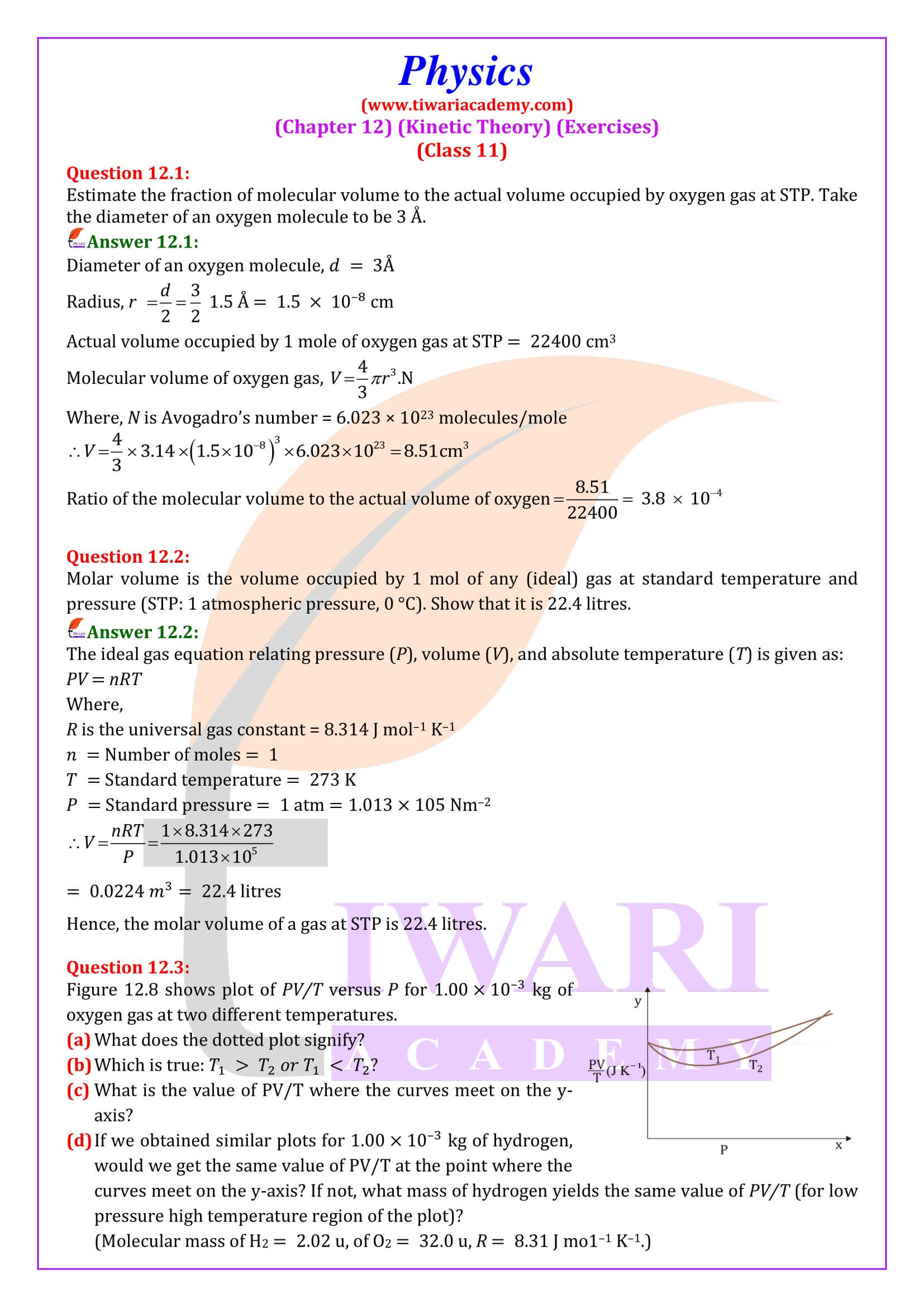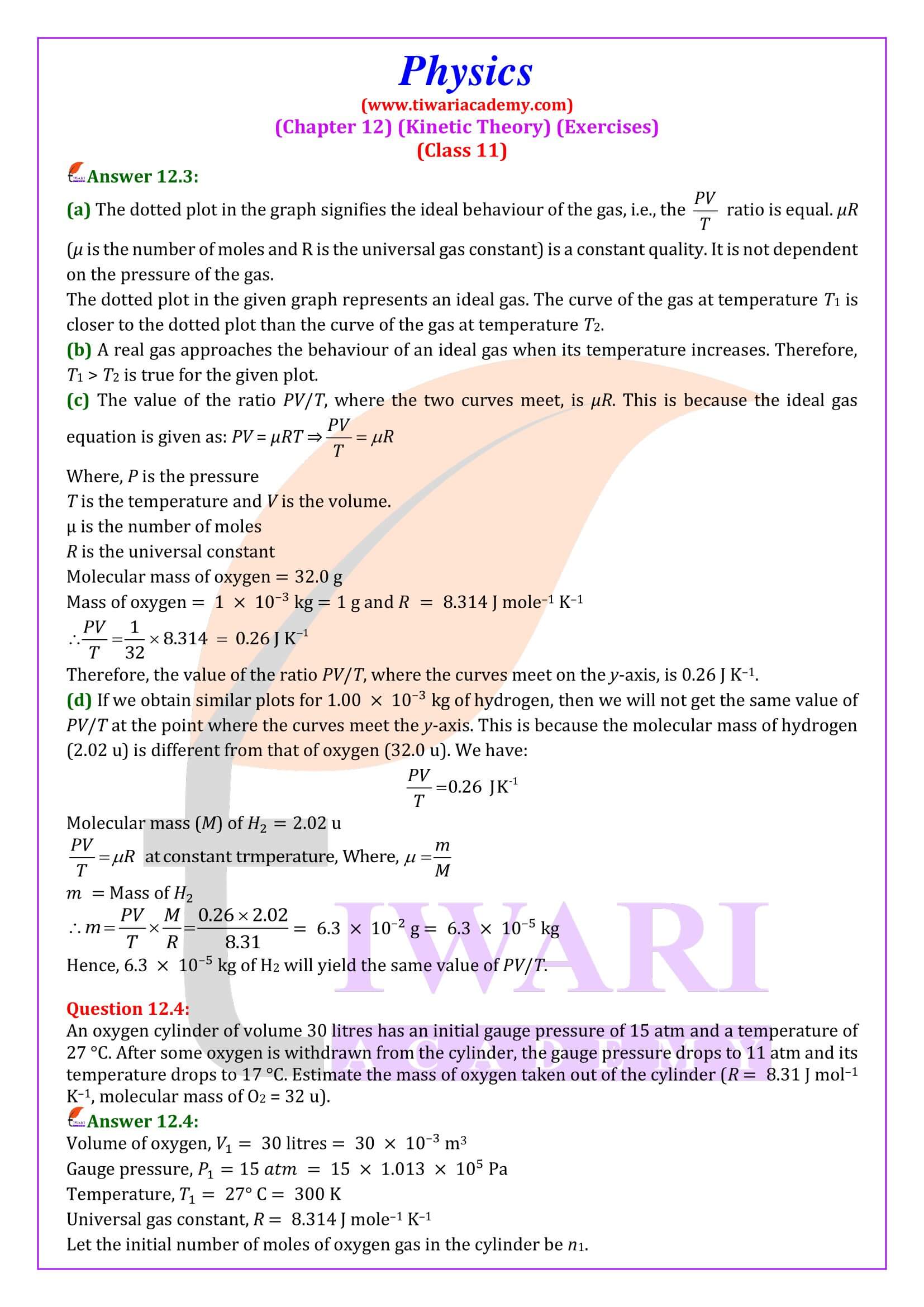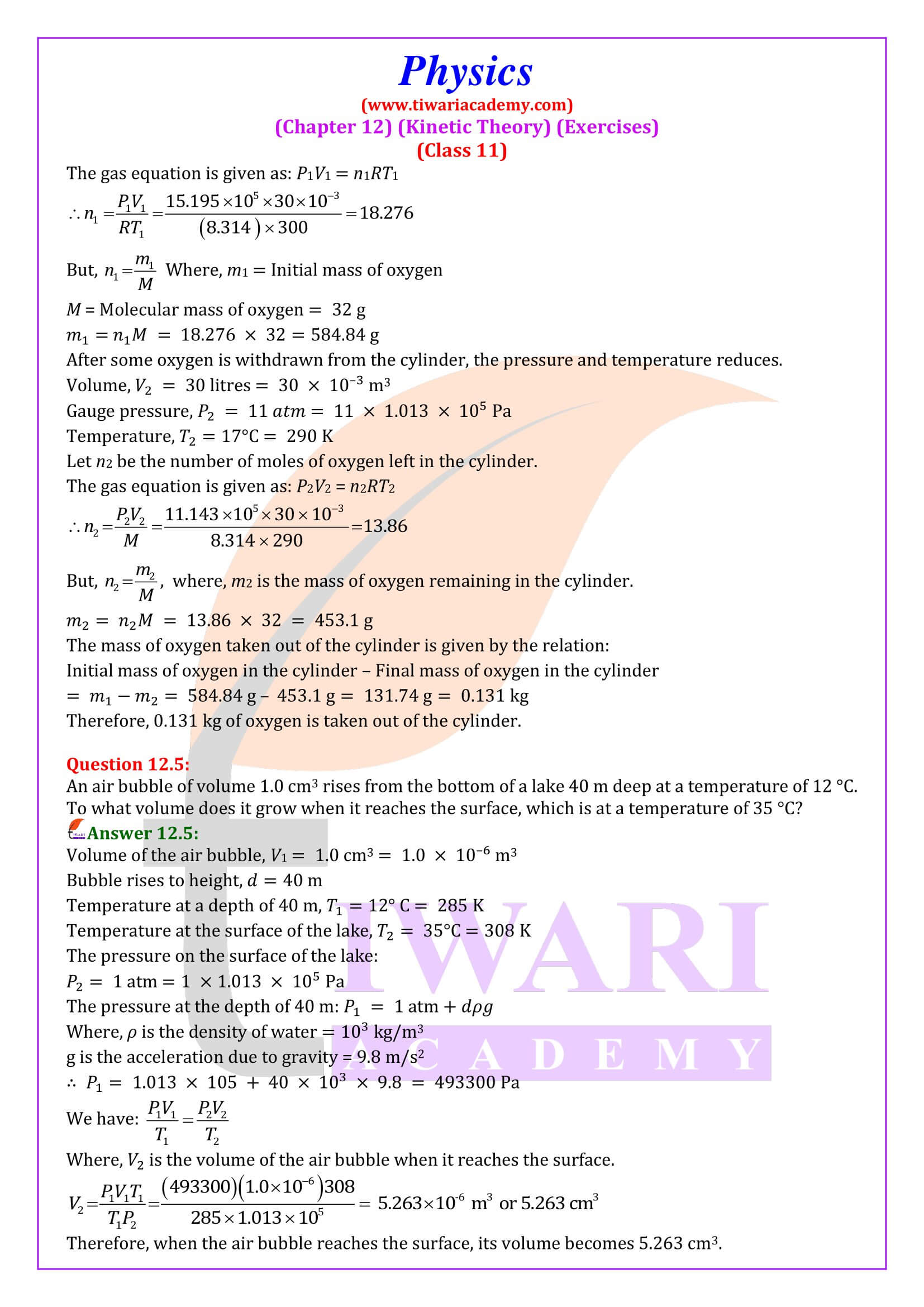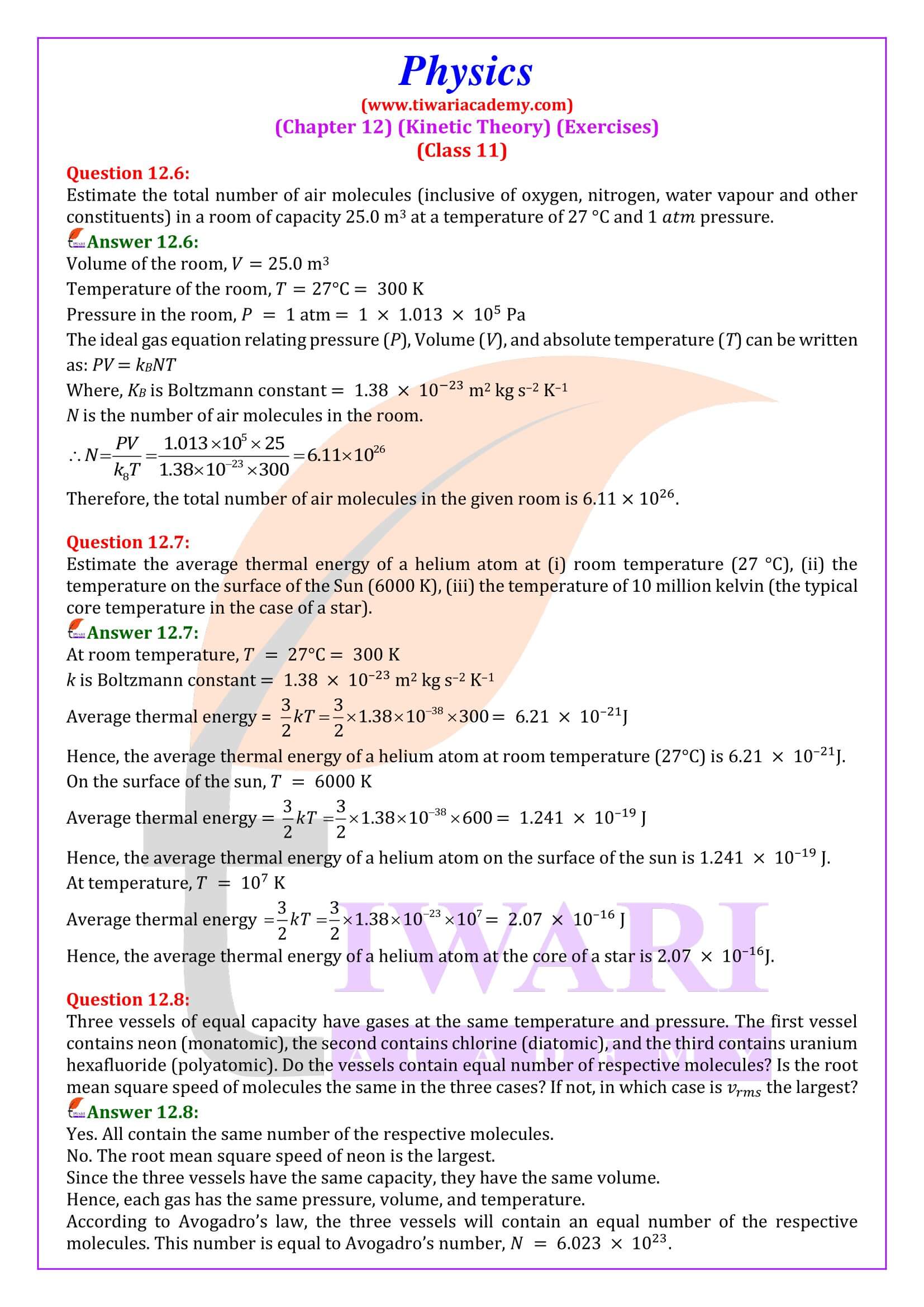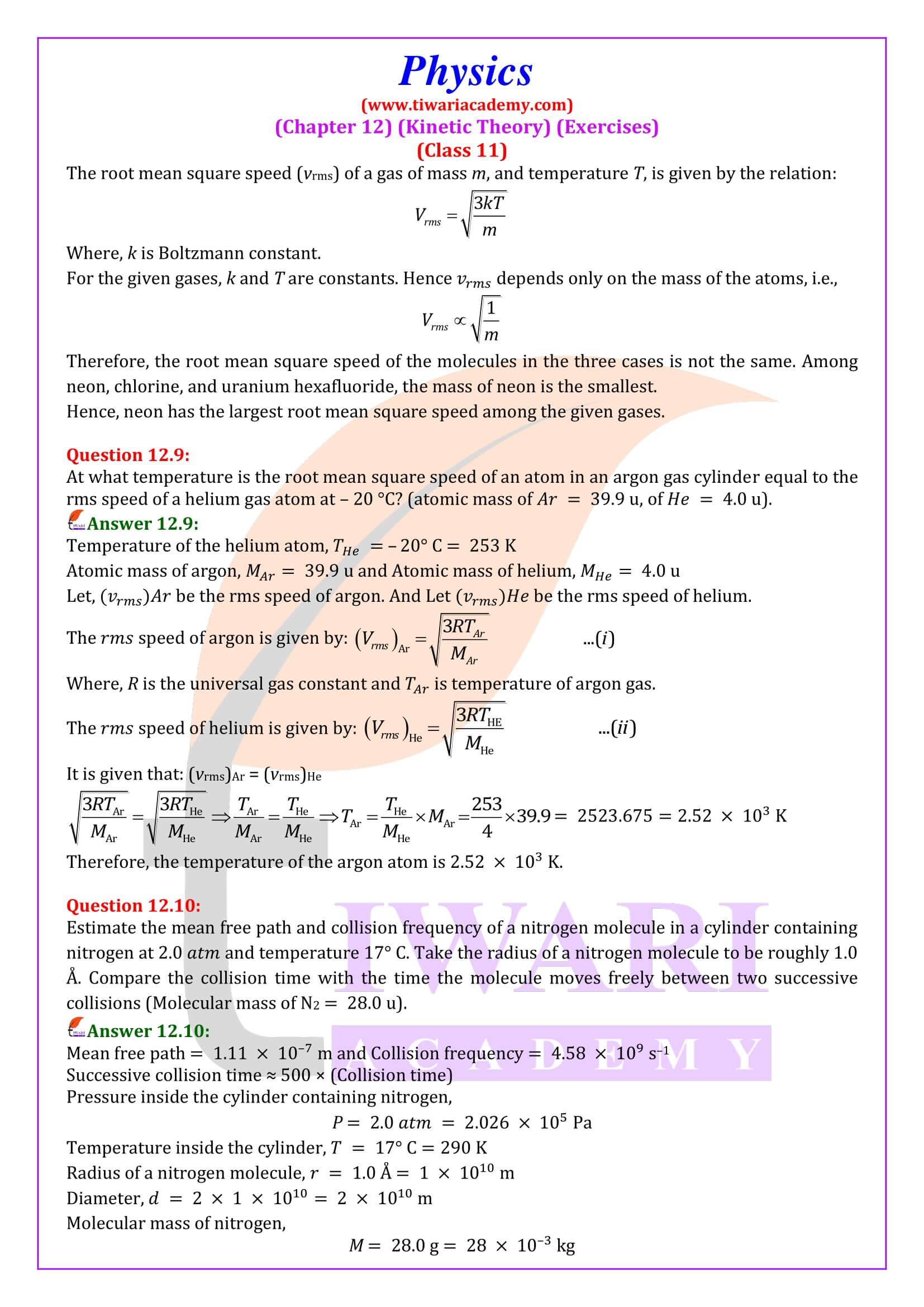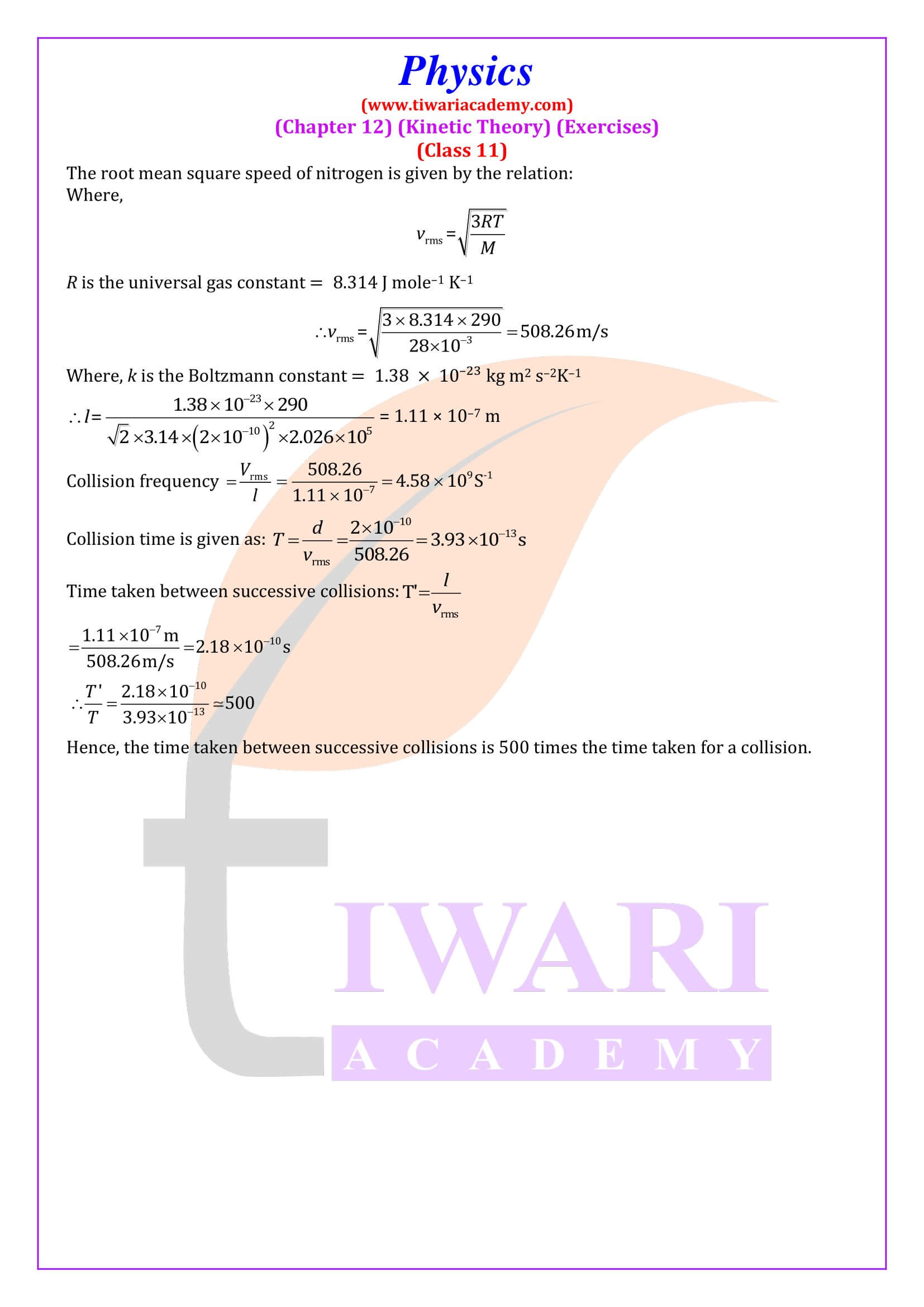NCERT Solutions for Class 11 Physics Chapter 12 Kinetic Theory in Hindi and English Medium updated for new academic session 2025-26 with MCQ and Extra question answers. To prepare chapter 12 of 11th Physics, maintain a study schedule that allocates sufficient time to each important topic. Organize your study materials, notes, and resources so that you can easily access them when needed.
Class 11 Physics Chapter 12 Kinetic Theory Question Answers
Class 11 Physics Chapter 12 MCQ
According to kinetic theory of gases, at absolute zero of temperature
Following gases are kept at the same temperature. Which gas possesses maximum r.m.s. speed?
Average kinetic energy of molecules is
The specific heat of a gas
The Rule of Equal Sharing
According to the law of energy distribution, when an atom or a particle is kept under constant thermal conditions, the entire molecule is split along the direction of their degrees of freedom. This suggests that the particles can move freely in their respective free space orientations or when subjected to external pressure. For example, students are free to go to their respective homes after school. In this case, their residence is the measure of freedom.
In complex molecular systems, the total internal energy is governed by the law of energy distribution. For example, here explains why the specific heat of complex gases increases with the number of atoms per molecule. The internal energy and high specific heat of diatomic molecules is greater than that of monatomic gas particles. Indeed, monatomic particles have only three translational degrees of freedom, while diatomic particles have five degrees of freedom, two of which are rotational.
Class 11 Physics Chapter 12 Multiple Choice Questions
An ideal gas is that which can
Energy supplied to convert unit of substance from solid to liquid state at its melting point is called
Latent heat of ice is
Real gases show mark able deviation from that of ideal gas behavior at
Class 11 Physics – Mean Free Path
Let’s understand what a free path is. By definition, a free path is the distance between two consecutive collisions. Gas molecules are always in constant motion, as we know from the behavior of gases. They collide with each other and with the walls of the container. Suppose molecule 1 collides first with molecule 2, then with molecule 3, and so on. When molecule 1 collides with molecule 2, it is called a first collision.
When it collides with molecule 3, it is called the second collision, and so on. The distance between the first and the second collision is called the free path, call it A1, the distance between the second and third collisions is called A2, and so on. Since there is no collision between two consecutive collisions, this path is called free path. The mean free path is the average distance traveled by a molecule between two collisions. Different free paths with different path lengths are known to exist.
Specific Heat Capacity in class 11 Physics
The thermal energy required to raise the temperature of a substance per unit mass is called its specific heat capacity. The specific heat capacity of a substance is a physical property. It is also an example of a large property, since its value is proportional to the size of the system considered. In general, specific heat capacity is a measure of the energy required to change the temperature of a system. However, it is important to understand that the energy contribution must be made by heating.
If work is done on the system, the temperature will rise; however, trying to calculate temperature rise using heat capacity and work done on it is inaccurate. Another thing to consider is the constraints on the system. As the latter acts on its surroundings when it expands, the specific heat capacity of a system which maintains a constant volume is different from that of a system which maintains a constant pressure. These differences are often overlooked when dealing with solids, but they are essential when dealing with gases. It is the heat required to raise the temperature of 1 kg of liquid or solid by 1 K, measured in Sl.
What is the main topic to be focused in class 11 Physics chapter 12?
Class 11 Physics chapter 12 describes about kinetic theory of gasses. It gives a basic idea of how gases behave, as gases are made up of fast moving atoms or molecules. The kinetic theory of gases was proposed by Maxwell, Boltzmann and others in the 19th century. An ideal gas is a gas that strictly obeys gas laws, such as Charles’ law and Boyle’s law. The ideal gas molecule is a point mass without attractive or repulsive forces.
What are the most important questions of Chapter 12 in class 11 Physics?
Students can download the most important problems covered in class 11 Physics Chapter 12 from Tiwari Academy website. Most of the questions are derivation and numerical type questions. Important questions help students achieve high marks in 11th grade physics. Additional exercises questions are provided here along with exercises to help students understand these concepts. Additional questions are prepared on the basis of the previous year’s materials from different schools pattern. All answers are given in accordance with the latest guidelines issued by the CBSE Board.
What are the assumptions of the kinetic theory described in chapter 12 of 11th Physics?
The main assumption of the kinetic theory of gas is that gas molecules occupy negligible space inside the container. This is completely explained in chapter 12 of class 11 Physics. Molecules follow a linear motion as they collide with the walls of the container and with each other. They exert no force of attraction or repulsion on each other, except during a collision. Collisions between gas molecules are completely elastic, i.e. there is no loss or gain of kinetic energy in the process and the total kinetic energy remains constant. The collision of gas molecules with the walls of the container creates gas pressure.
